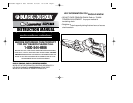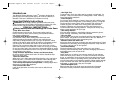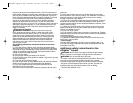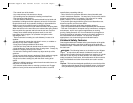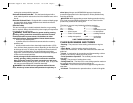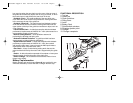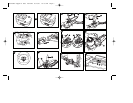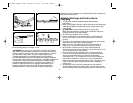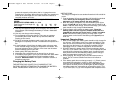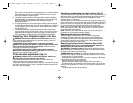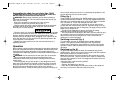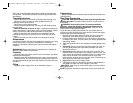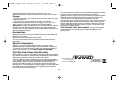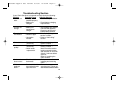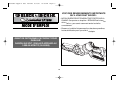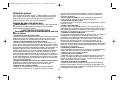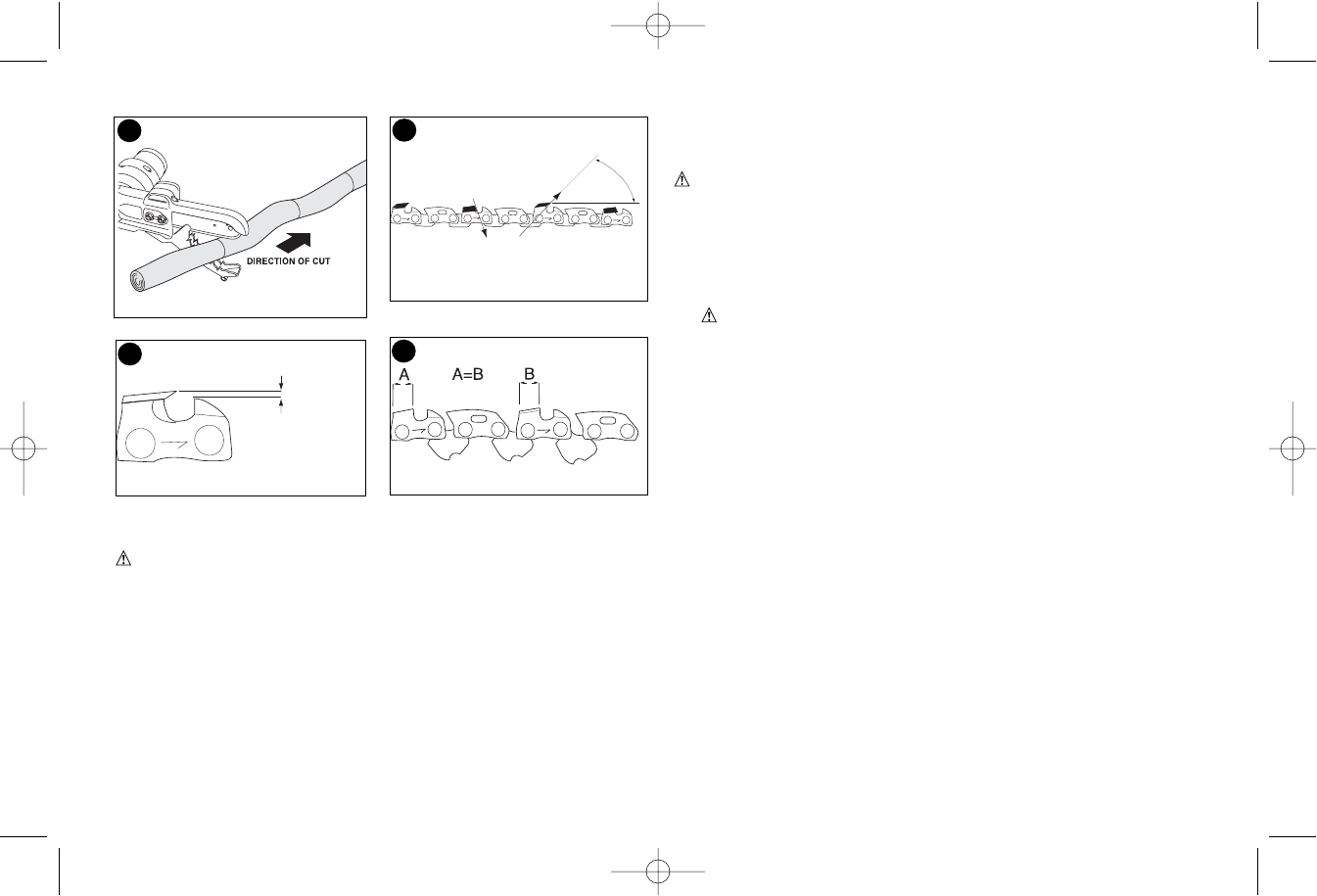
8
protected and well insulated from materials that could contact them
and cause a short circuit.”
Safety Warnings and Instructions:
Charging
1. This manual contains important safety and operating
instructions.
2. Before using battery charger, read all instructions and cautionary
markings on battery charger, battery pack, and product using
battery pack.
3. CAUTION: To reduce the risk of injury, charge only
Black & Decker Batteries. Other types of batteries may burst
causing personal injury and damage.
4. Do not expose charger to rain or snow.
5. Use of an attachment not recommended or sold by Black &
Decker may result in a risk of fire, electric shock, or injury to
persons.
6. To reduce risk of damage to electric plug and cord, pull by plug
rather than cord when disconnecting charger.
7. Make sure cord is located so that it will not be stepped on,
tripped over, or otherwise subjected to damage or stress.
8. An extension cord should not be used unless absolutely
necessary. Use of improper extension cord could result in a risk
of fire, electric shock or electrocution.
a. Two-wire cords can be used with 2-wire or 3-wire extension
cords. Only round jacketed extension cords should be used,
and we recommend that they be listed by Underwriters
Laboratories (U.L.). If the extension is to be used outside, the
cord must be suitable for outdoor use. Any cord marked for
outdoor use can also be used for indoor work. The letters "W" or
"WA" on the cord jacket indicate that the cord is suitable for
outdoor use.
b. An extension cord must have adequate wire size (AWG or
American Wire Gauge) for safety, and to prevent loss of power
and overheating. The smaller the gauge number of the wire, the
before placing battery in charger or tool.
WARNING: Do not store or carry battery so that metal objects
can contact exposed battery terminals. For example, do not place
battery in aprons, pockets, tool boxes, product kit boxes, drawers,
etc. with loose nails, screws, keys, etc. without battery cap.
Transporting batteries can possibly cause fires if the battery
terminals inadvertently come in contact with conductive materials
such as keys, coins, hand tools and the like. “The US Department of
Transportation Hazardous Material Regulations (HMR) actually
prohibit transporting batteries in commerce or on airplanes (i.e.
packed in suitcases and carryon luggage) UNLESS they are
properly protected from short circuits. So when transporting
individual batteries, make sure that the battery terminals are
60°
.025"
M
N
O
direction de la coupe
dirección del corte
L
90520380 Lopper w batt revised 8/27/07 10:57 AM Page 8



